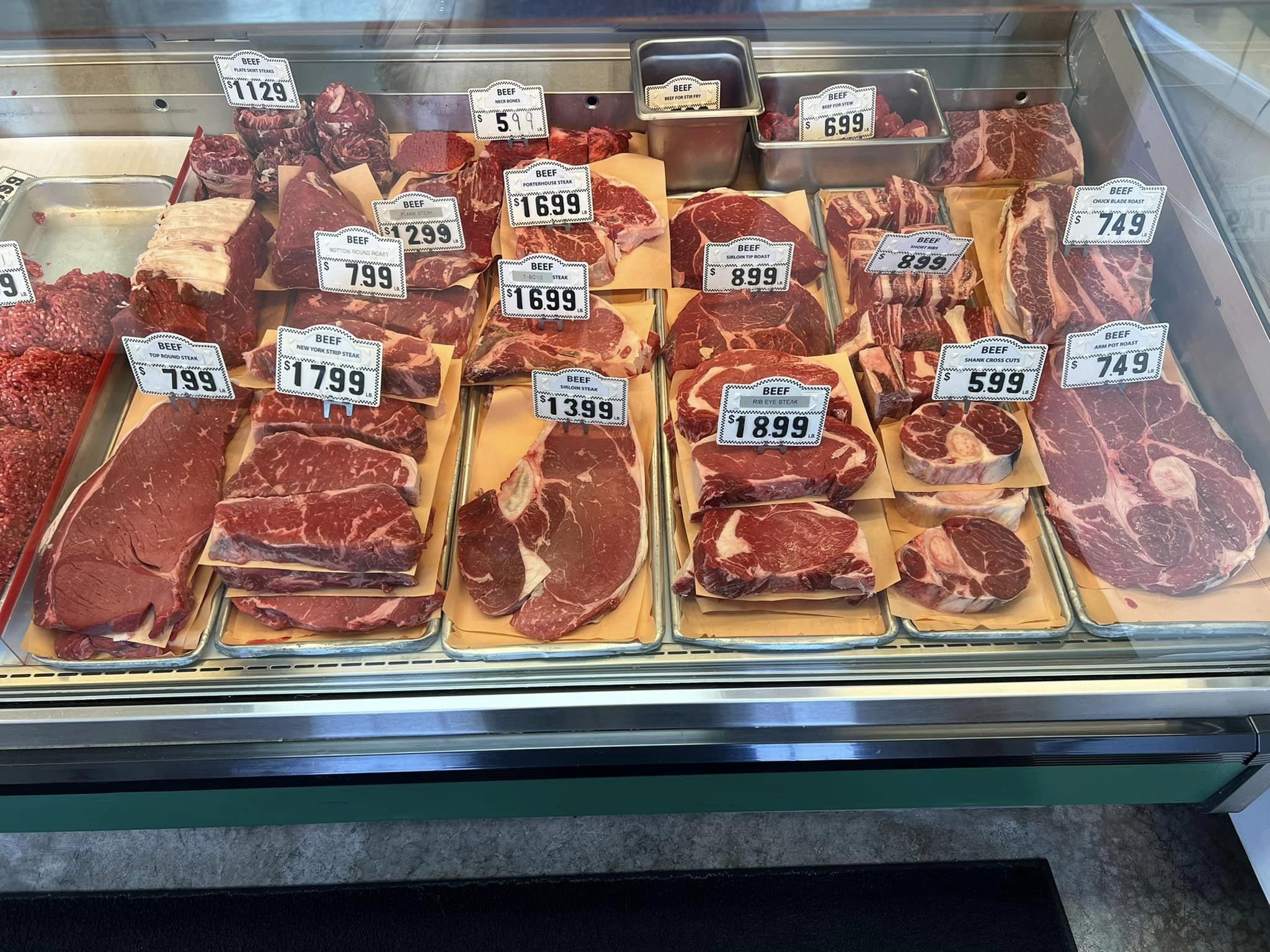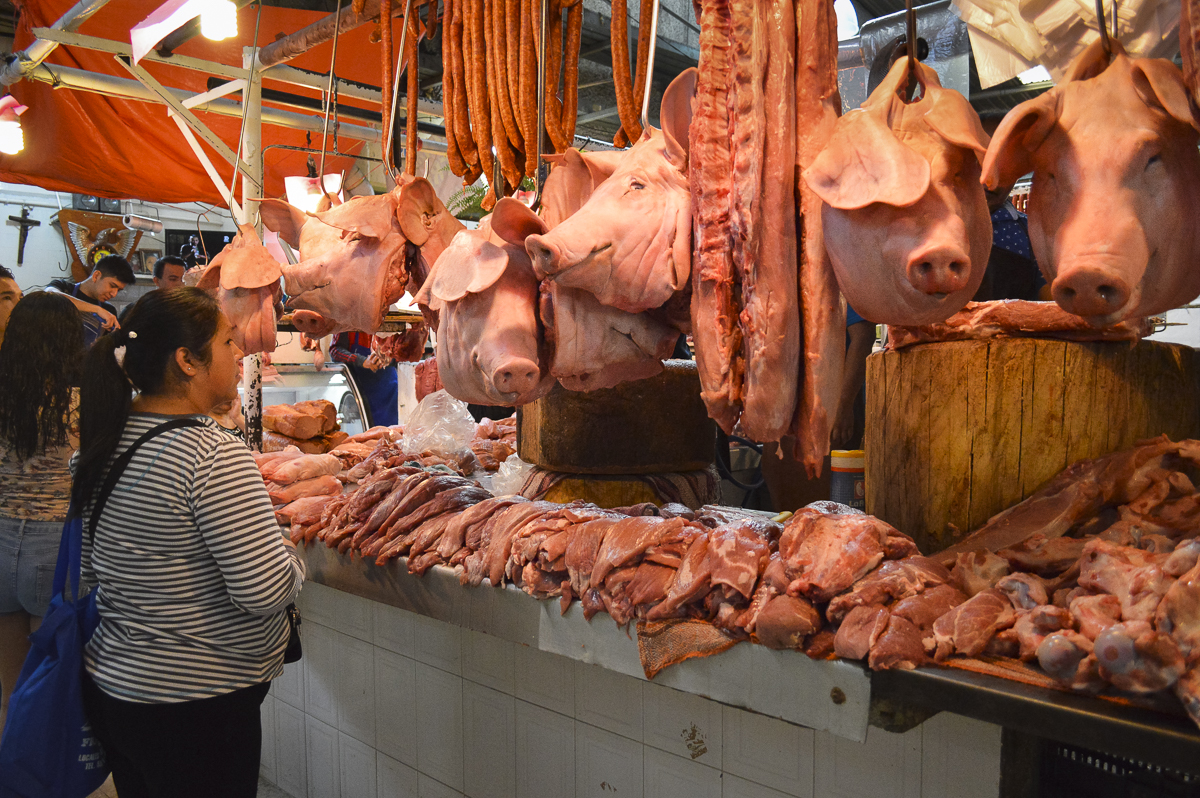Check Out the Local Taste at Bagley Farms Meat Market Edwardsville IL: Fresh and Delicious
Check Out the Local Taste at Bagley Farms Meat Market Edwardsville IL: Fresh and Delicious
Blog Article
Reveal the Art of the Butcher's Cut in a Modern Meat Market
In the ever-evolving landscape of modern-day meat markets, the butcher's cut has actually transcended its typical roots, combining old-time craftsmanship with contemporary methods. What really sets the modern butcher apart is their ability to build a much deeper link in between consumers and the origins of their meat.
Advancement of Butchery Methods

The mid-20th century saw butchery techniques better improved by scientific insights into muscular tissue biology and meat aging, boosting both inflammation and preference. Innovations like vacuum product packaging and refrigeration expanded product shelf-life, allowing butchers to branch out offerings and enhance quality assurance. This duration additionally noted the surge of customized devices, such as band saws and meat slicers, which enhanced precision and performance in meat handling.
Digital systems currently help in monitoring animal provenance and maximizing cuts to meet certain client choices. Furthermore, a renewal in artisanal butchery has arised, blending conventional skills with contemporary understanding to provide to customers seeking ethical and sustainable meat options.

Comprehending Meat Cuts

Understanding the complexities of meat cuts is necessary for both butchers and consumers looking for quality and value. For butchers, precise cuts show ability and regard for the craft, making certain minimal waste and optimum return.
The main classifications of meat cuts include primitive, sub-primal, and retail cuts. Primitive cuts, such as the loin, rib, and chuck, are the large areas originally divided from the carcass. Butchers then break these down additionally into sub-primal cuts, before lastly producing retail cuts readily available to customers, like ribeye or tenderloin. Each stage requires careful interest to physiological framework and muscular tissue composition.
Understanding muscular tissue make-up is crucial; muscular tissues used much more regularly by the pet tend to be harder and are best fit for sluggish food preparation techniques, while less-used muscle mass, like those found in the loin, are more tender and suitable for cooking or roasting. Experience with these differences equips consumers to make informed selections, boosting their culinary endeavors.
Choosing High Quality Meat
Picking the appropriate meat involves greater than simply selecting a visually attractive item from the display screen. The art of choosing quality meat calls for a critical eye and knowledge of details qualities that indicate freshness and quality. Pay interest to the my sources color; beef must have a bright, cherry-red color, while lamb should display a soft pink tone, and pork a light pink. This indicates the meat is fresh and hasn't been exposed to oxygen for also long.
Second of all, consider the marbling, which refers to the white streaks of fat within the muscle mass. Proper marbling is a vital sign of inflammation and flavor, as it thaws during cooking, boosting the meat's juiciness. Remember, higher marbling commonly associates with premium quality cuts, such as USDA Prime.
Appearance is one more critical variable; meat ought to really feel solid to the touch, not slimy or extremely soft. Furthermore, bear in mind the fragrance. Fresh meat should have a clean, neutral scent, cost-free from any kind of sour or repulsive smells.
Combining Cuts With Food Preparation Methods
Successfully coupling cuts of meat with the proper food preparation methods is crucial for accomplishing optimal flavor and texture. Various cuts vary in tenderness, marbling, and connective tissue content, each calling for particular methods to open their potential. Tender cuts like filet mignon and ribeye, with their inherent marbling, benefit from high-heat, quick-cooking methods such as barbecuing or pan-searing. These methods improve the meat's all-natural flavors and ensure a juicy surface.
Alternatively, harder cuts like brisket and chuck roast are rich in collagen, which damages down right into gelatin this link when cooked gradually. These cuts are excellent for braising or slow-moving roasting, allowing the meat to tenderize in time and develop deep, intricate tastes. Cuts such as brief ribs and pork shoulder get on well with slow-cooking methods, where expanded cooking times transform their durable textures into delicious meals.
Lamb shanks and oxtail, which call for long term food preparation to tenderize, are excellent candidates for cooking or slow-moving simmering. These approaches coax out abundant, passionate tastes while preserving wetness. By comprehending the distinct qualities of each cut, chefs and home chefs alike can elevate their cooking productions, making certain each recipe is both satisfying and remarkable.
The Butcher's Duty Today
Browsing the progressing landscape of the modern-day meat market, the butcher's duty today prolongs past mere prep work of cuts. Contemporary butchers are cooking craftsmens, educators, and supporters for lasting practices.
Along with crafting specific cuts, butchers currently engage straight with customers, offering cooking guidance and customizing options to suit private requirements and choices. Their knowledge in meat aging, marbling, and taste accounts empowers customers to make informed decisions, enhancing their culinary experiences. This personalized service exemplifies the butcher's progressing duty as a relied on consultant in the kitchen.
Furthermore, butchers are essential in lessening waste, using whole pets to create diverse items such as sausages and supplies - bagley farms meat market edwardsville il. This thorough method not just appreciates the pet but also straightens with contemporary sustainability goals. By doing this, the modern butcher personifies both practice and innovation, adapting to an ever-changing market find more information while maintaining the artistry and honesty of their craft

Verdict
The contemporary butcher's craft elaborately weaves conventional strategies with modern technologies, stressing lasting methods and moral sourcing. Proficiency in recognizing diverse meat cuts and top quality signs encourages butchers to offer enlightened suggestions, aligning certain cuts with ideal cooking approaches. This proficiency not just raises cooking experiences but additionally reinforces the connection in between customers and the origins of their food. By honoring historic techniques while welcoming contemporary needs, the butcher's role remains vital in today's sophisticated meat market.
Report this page